Full List of the Official National Symbols of the USA
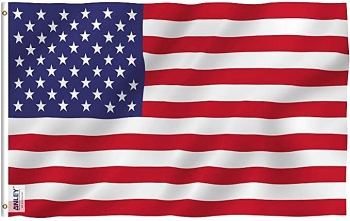 Top 9 Iconic Symbols of the USA You Should Know Top 9 Iconic Symbols of the USA You Should Know |
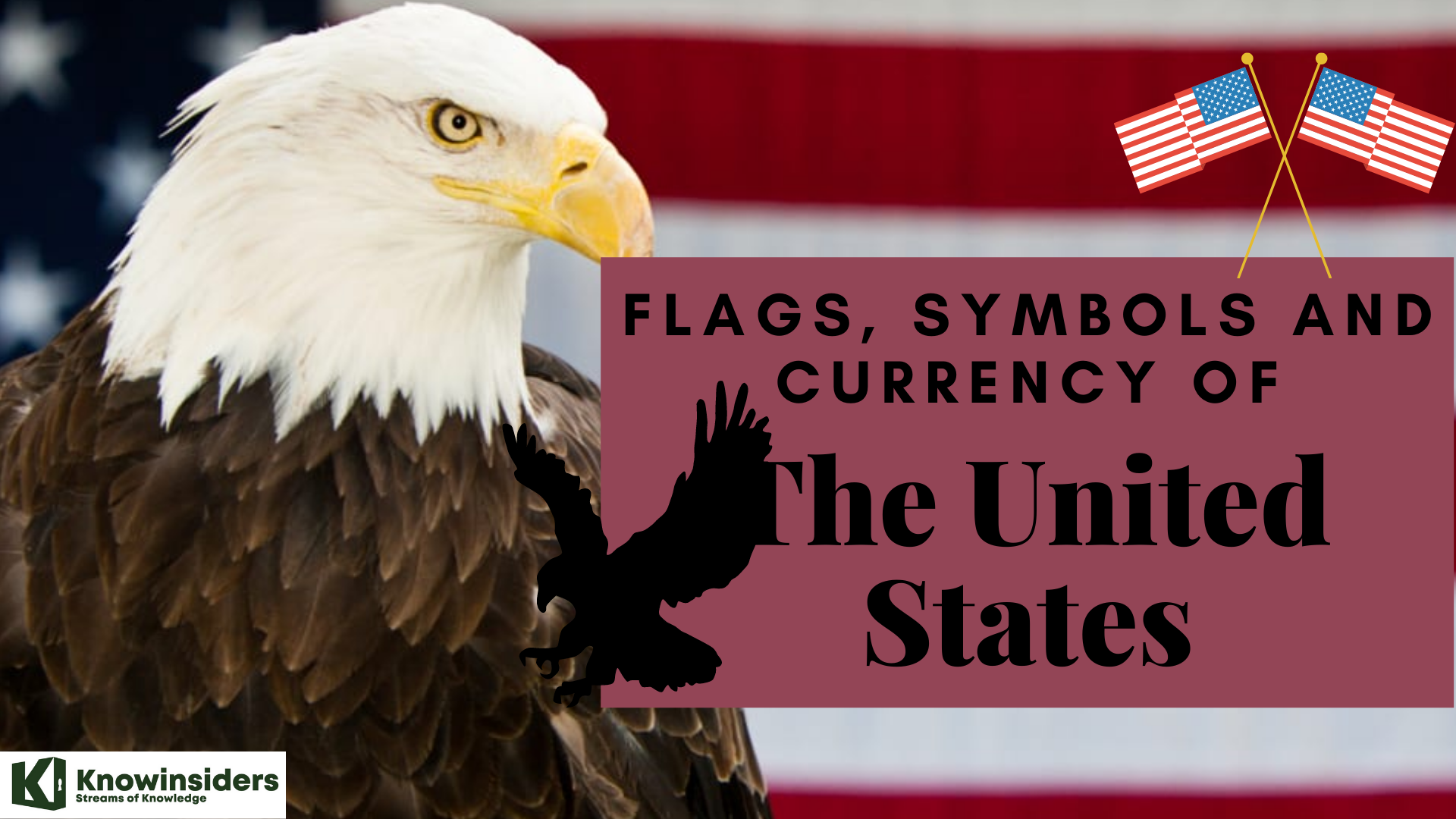 What are the Flags, Symbols & Currency of the United States What are the Flags, Symbols & Currency of the United States |
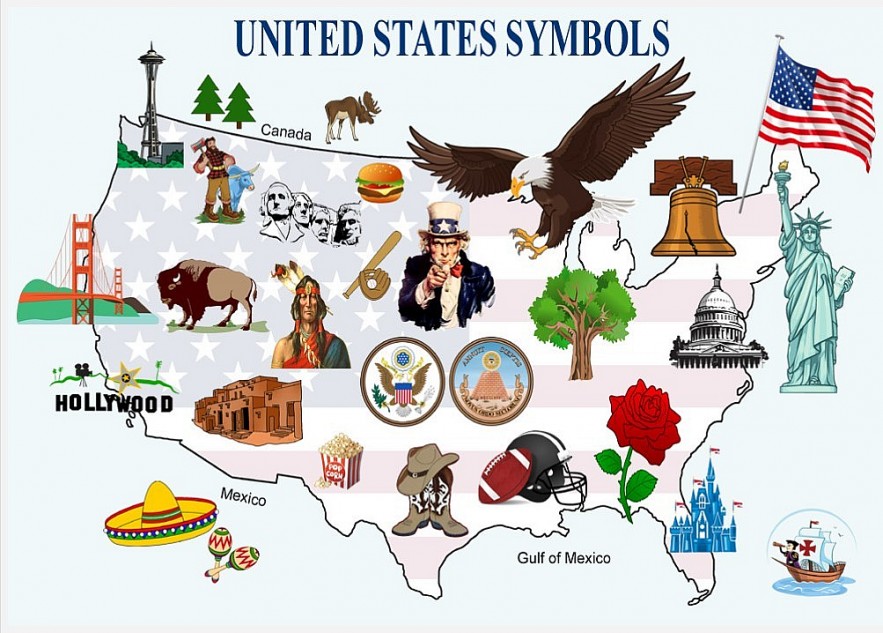 |
| Official Symbols of the United States |
| Table of Contents |
A symbol is something that has a special meaning.
Every country in the world chooses specific symbols or emblems that they consider to represent the characteristics of their nation. The United States has multiple "Official National Symbols." These symbols can unite a nation by serving as reminders of its history and fundamental principles.
1. United States Flag
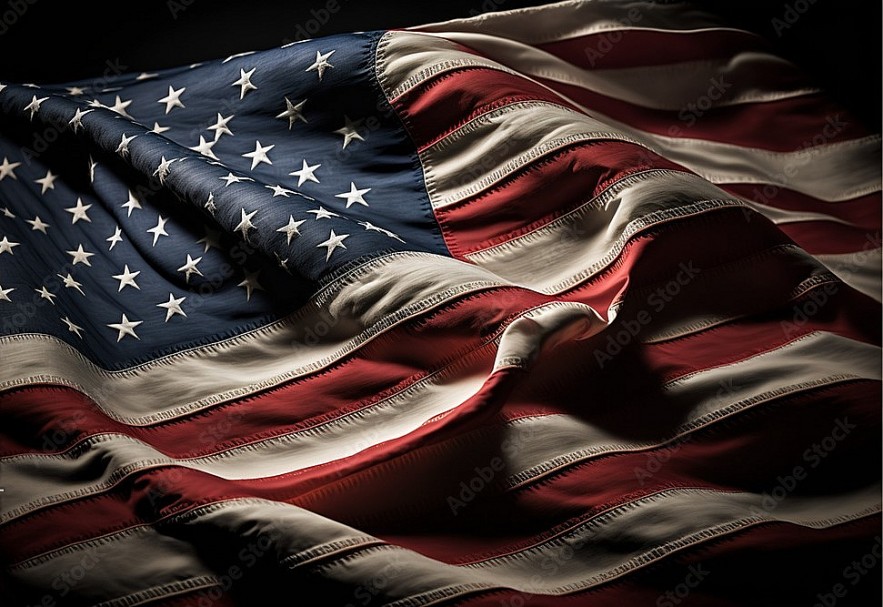 |
| United States Flag |
The "Stars and Stripes" or "Old Glory" are popular names for the American flag.
"Resolved, That the flag of the United States be thirteen stripes, alternate red and white; that the union is thirteen stars, white in a blue field, representing a new Constellation," was the resolution passed by the Continental Congress on June 14, 1777.
President Eisenhower's Executive Order, dated August 21, 1959, stipulated that the stars should be arranged in two ways: nine rows of stars spaced horizontally and eleven rows of stars spaced vertically.
It is unclear if Betsy Ross sewed the first flag made in accordance with this resolution; a lot of historians think this tale is made up. The 27th iteration of the 50-star flag, which has been in use since 1960, is the current one.
In order to represent the 13 colonies, Congress enacted a law in 1818 that stipulated that each new state would have its own star while the 13 stripes would remain the same.
→ Learn more about the United States Flag!
2. The National Anthem
The history of "The Star-Spangled Banner" is colorful. After witnessing the British Navy bombarding ships during the Battle of Fort McHenry in Baltimore, Maryland, during the War of 1812, Francis Scott Key wrote the poem that would eventually become the anthem's lyrics in 1814. The melody was "borrowed" from a well-known British song's tune.
In 1931, the song took the place of a number of other popular songs sung at public gatherings as the official national anthem. The anthem's references to war and the difficulty of the singing make it somewhat divisive.
→ Learn more about the American National Anthem
3. National Bird – Bald Eagle
 |
| The bald eagle is the country’s national bird. It stands for bravery and strength |
The American bald eagle has long been recognized as the country's national bird.
The landing of the bald eagle on the US Great Seal in 1782 is associated with it. Benjamin Franklin, Thomas Jefferson, and John Adams were tasked by the Continental Congress with creating the official seal of the newly formed nation soon after the Declaration of Independence was signed on July 4, 1776.
But neither of the two committees that were tasked with doing so later on, nor the three Founding Fathers, were able to produce a plan that was approved by Congress. The work of all three committees was turned over to Congress secretary Charles Thomson in the middle of June 1782. William Barton, a talented Pennsylvania lawyer, had included an eagle in a design that the third committee submitted; Thomson increased its prominence by emphasizing what he thought were the submissions' best features.
Congress approved Thomson's suggestion on June 20, 1782, to substitute an American bald eagle for Barton's small, white eagle in Barton's design. (Contrary to popular belief, there is no proof that Ben Franklin argued against the turkey and protested the bald eagle's selection to Congress; however, he did refer to the eagle as "a bird of bad moral character" in a 1784 letter to his daughter.) The bald eagle became an iconic symbol of the United States when its design was used on official documents, currency, flags, public buildings, and other government-related items.
| The bald eagle was chosen because of its long life, great strength, and majestic looks and because it was believed to exist only on this continent at the time. |
→ Learn more: What Is the US National Bird?
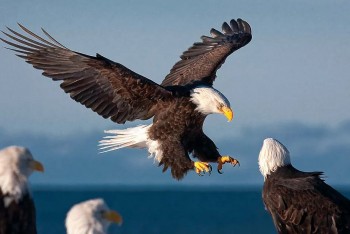 What is the Bald Eagle, the Official National Bird of the United States? What is the Bald Eagle, the Official National Bird of the United States? |
4. National Mammal – North American Bison
Similar to the bald eagle, the bison has served as a symbol of America for strength, tenacity, and dignity, embodying the spirit of our nation's pioneers. In a ceremony held in November at Wind Cave National Park in South Dakota, the bison was formally designated as the National Mammal in May 2016. Formerly, tens of millions of bison, or buffalo, roared over a region that extended from central Canada through the Great Plains and into northern Mexico.
The commercial hunting of buffalo pelts caused a century-long slaughter of the species, which by the late 1800s had reduced the population to a thousand or less. But now, some 30,000 wild bison can be found all over the nation, with Yellowstone National Park housing the majority of them. In the United States and Canada, they are also sporadically located on public, tribal, and private lands.
5. The Liberty Bell
 |
| The Liberty Bell is located in Pennsylvania's Philadelphia. Big events used to trigger its ring. It's another representation of liberty. |
The Liberty Bell was commissioned in 1752 because the leaders of the Pennsylvania colony desired a bell that could be heard throughout the city for their state house, which is now known as Independence Hall. A biblical quotation reads, "Proclaim LIBERTY throughout all the land unto all the inhabitants thereof," on one side of the bell.
The bell's most distinctive feature is a metal crack that extends up from the bell's lip. Many people think that the Declaration of Independence was read aloud on July 8, 1776, and that is why the Liberty Bell was rung, even though there is no evidence to support this belief. Abolitionists began using the bell as a symbol of their fight to end slavery in the 1830s, and they gave it the popular name "Liberty Bell." The bell toured the nation for patriotic events and exhibitions between 1885 and 1915.
At the moment, the bell is housed in Independence Mall in Philadelphia's Liberty Bell Center. The appearance of the crack may have increased the bell's symbolic significance. The crack in the bell is the source of numerous stories that have almost reached mythic proportions.
6. National Motto – In God We Trust
"In God We Trust" was adopted as the official national motto of the United States of America by President Dwight Eisenhower in 1956 after a Joint Resolution of the 84th Congress was approved. This motto took the place of "E Pluribus Unum," which had been present since the Great Seal's original design in 1776. The 1864 two-cent coin featured the motto for the first time.
7. Great Seal of the United States
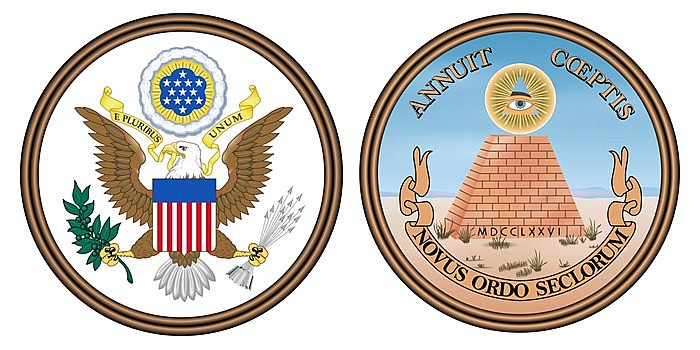 |
| Great Seal of the United States |
Presidental proclamations and foreign treaties are among the documents that can be authenticated with this seal, which was created in 1782.
The principles and ideals that the Founding Fathers wished to instill in their children are reflected in the symbols on the seal. Our national bird, the bald eagle, is featured in the center of the seal. It is holding a scroll bearing our original national motto, "E Pluribus Unum," which is Latin for "one from many" and refers to a nation formed from 13 colonies. The eagle, symbolizing the power of both peace and war, is holding an olive branch in its right talon and a group of thirteen arrows in its left. The national coat of arms, which appears on many documents such as US passports, military insignia, embassy placards, and flags, is portrayed on the back of the Great Seal.
The coat of arms features an eye at the top of a 13-step pyramid with the Latin motto "Annuit Coeptis," which translates to "He favors our undertakings," and the year 1776 written in Roman numerals. A scroll beneath the pyramid bears the words "Novus Ordo Seclorum," which translates to "New Order of the Ages" in Latin and marks the start of the American new era in 1776.
8. Uncle Sam
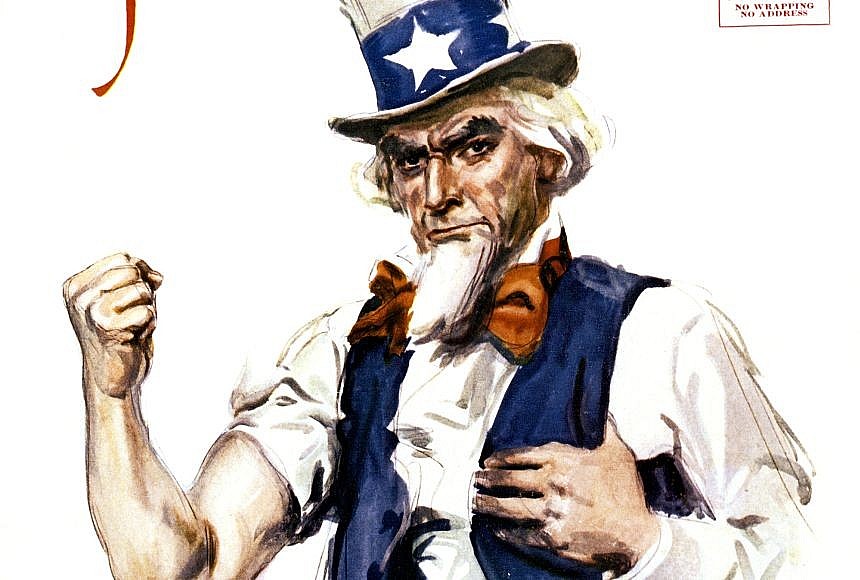 |
| Uncle Sam |
Uncle Sam, also known by his initials "U.S.," is a well-known national symbol for the United States federal government or the country as a whole. Legend has it that he was first used during the War of 1812. The name is associated with Troy, New York meatpacker Samuel Wilson, who provided barrels of beef to the American Army in the War of 1812. He is described as an older, bearded man wearing patriotic-themed clothing. Uncle Sam is a specific representation of the government, but Columbia is a national symbol of the United States.
9. The Statue of Liberty
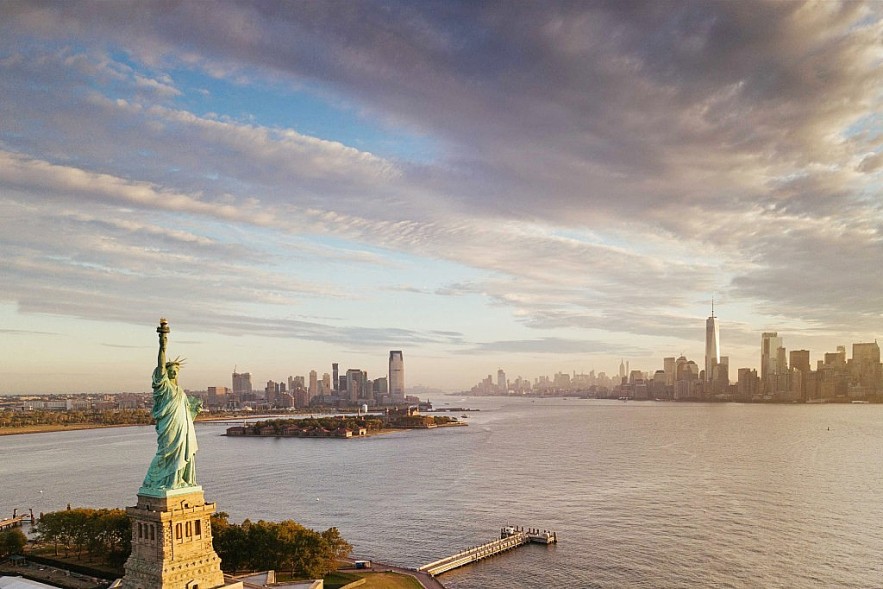 |
| The Statue of Liberty |
The statue, officially named "Liberty Enlightening the World," was a gift from the French people to the United States. The statue depicts Libertas, the Roman goddess of freedom, and was dedicated in 1886. The statue, which is in New York Harbor, is holding a tablet that represents the law in one hand and a torch in the other.
The tablet bears the date of the Declaration of Independence. At Libertas' feet is a broken chain. The statue is a well-known representation of liberty. The statue has served as a symbol for protestors fighting for political freedom all over the world.
The Liberty Island neoclassical sculpture is a popular tourist destination and is currently a part of the Statue of Liberty National Monument.
 History of the Statue of Liberty: TimeLine, Interesting Facts and Origins History of the Statue of Liberty: TimeLine, Interesting Facts and Origins |
10. Oath of Allegiance: Pledge of Allegiance
A pledge of allegiance to the United States of America, the oath of allegiance is frequently recited at government ceremonies, schools, and other events.
August 1892 saw the writing of the Pledge of Allegiance by socialist minister Francis Bellamy (1855–1931).
On September 8, 1892, it was first published in The Youth's Companion. Bellamy had hoped that people in every nation would take up the pledge. In its initial form it said: "I pledge allegiance to my Flag and the Republic for which it stands, one nation, indivisible, with liberty and justice for all."
"The Flag of the United States of America" was added in 1923. At that point it said: "I pledge allegiance to the Flag of the United States of America and to the Republic for which it stands, one nation, indivisible, with liberty and justice for all."
President Eisenhower urged Congress to include the phrase "under God" in 1954 in response to the Communist threat of the day, resulting in the 31-word pledge we use today. The daughter of Bellamy took issue with this modification. Today it says: "I pledge allegiance to the flag of the United States of America, and to the republic for which it stands, one nation under God, indivisible, with liberty and justice for all." According to Flag Code Section 4, Standing at attention and facing the flag with your right hand over your heart, you should recite the Pledge of Allegiance to the Flag, which reads, "I pledge allegiance to the Flag of the United States of America, and to the Republic for which it stands, one Nation under God, indivisible, with liberty and justice for all." Men should take off any non-religious headwear when they are not in uniform by placing their right hand over their heart and holding it at their left shoulder. Individuals wearing uniforms are expected to maintain silence, face the flag, and offer the military salute.
The original Bellamy salute, which Francis Bellamy, the creator of the original Pledge, first recorded in 1892, involved extending the arm in the direction of the flag after saying the words "to the flag." Soon after, the right hand was placed over the heart to begin the pledge. After saying "to the Flag," the arm was extended, palm down, toward the flag. The salute was modified to maintain the right hand over the heart throughout World War II because it too closely resembled the Nazi salute.
11. National March: "The Stars and Stripes Forever"
John Philip Sousa wrote "The Stars and Stripes Forever" in 1896, and it serves as the US national march. The March is a heartfelt musical selection that honors the nation's military prowess and flag. It is frequently performed during ceremonies and patriotic events.
12. Mount Rushmore: Carved 1927 – 1941
The original purpose of Mount Rushmore was to draw tourists to South Dakota. Beyond that concept, artist Gutzon Borglum wanted to build a memorial honoring the first 150 years of American history.
Every president atop the mountain symbolizes a different aspect of American history: George Washington stands for the country's founding, Thomas Jefferson for its growth (including the Louisiana Purchase during his presidency), Abraham Lincoln for its survival during the Civil War, and Theodore Roosevelt for its advancement (becoming a global power and building the Panama Canal).
13. White House
In our nation, the White House is the most well-known residence. It is situated in D.C. The White House is home to the President and his family. In the White House, the President is employed as well. The Oval Office is the name of the President's workspace. The White House took eight years to construct. It was constructed from white-painted stone and brick. The White House comprises 132 rooms. Prominent figures from across the globe convene at the White House to greet the President.
14. National Flower – Rose
The United States of America designated the rose as its official flower and floral emblem in 1986. The rose is a native plant to all of North America. It can have a beautiful, rich scent and bloom in a variety of colors, such as red, pink, white, or yellow. Around the world, the rose represents politics, war, love, and beauty. Additionally, a number of the 50 states—including North Dakota, Oklahoma, Georgia, Iowa, and New York—have designated the rose as their official state flower.
15. White Oak - National tree of America
The United States of America officially recognized the mighty oak tree as its national tree in 2004. More than 60 species of oak trees can be found in the US, and they are prized for their exquisite appearance, copious amounts of shade, and premium lumber. "This is an excellent choice to symbolize our country's strength, as it develops from merely an acorn into a formidable entity whose numerous branches continue to strengthen and reach skyward with every passing year," remarked one U.S. senator.
Frequently Asked Questions
What are some patriotic symbols of the United States?
The United States has a lot of patriotic symbols. The American flag, the Great Seal of America, and the bald eagle are the most identifiable.
What is America's national symbol?
The United States has a large number of national symbols. The American flag, the Great Seal of the United States, and the bald eagle are the most recognizable.
What is the national bird of the United States?
The national bird of the United States is the Bald Eagle. It is a symbol of freedom, strength, and courage.
What does the flag of the United States represent?
The American flag, commonly referred to as the Stars and Stripes, symbolizes the principles of freedom, democracy, and unification as well as the 13 original colonies that proclaimed their independence from Great Britain to form the United States.
What is the significance of the Statue of Liberty in the United States?
A representation of liberty and democracy in the US is the Statue of Liberty. It's in New York Harbor and was a gift from France. For those who are considering immigrating to the US, the statue is a symbol of hope and the friendly nature of the US.
What is the national flower of the United States?
The national flower of the United States is the Rose. It is a symbol of beauty, love, and patriotism, and has been used in many official ceremonies and events throughout U.S. history.
What is the Great Seal of the United States and what does it symbolize?
Official government documents are authenticated by the Great Seal of the United States. It has a shield on its chest, an eagle clutching an olive branch and arrows, and a banner with the words "E Pluribus Unum" (Out of Many, One). The olive branch and arrows stand for peace and war, while the eagle and shield stand for power and defense. The motto stands for the unification of the states that make up the US.
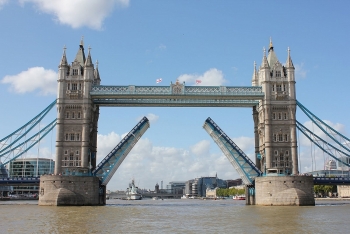 Top 9 iconic symbols of the UK Top 9 iconic symbols of the UK A country is known for its national symbols as representative of that country towards tourists. When it comes to iconic symbols, those things will ... |
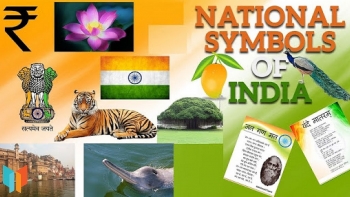 Top 9 Most Iconic Symbols of India Top 9 Most Iconic Symbols of India The Republic of India has several national symbols. The national symbols of India represent the culture and nature of India's National Identity. They infuse a ... |
The Philippines has several national symbols. The national symbols of the Philippines consist of symbols that represent Philippine traditions and ideals and convey the principles ... |
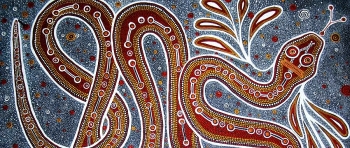 Top 9 Iconic Symbols of Australia Top 9 Iconic Symbols of Australia Symbols of one country are the defining features of that culture. For a country with a short urban history and small population, Australia has a ... |
 9 Iconic Symbols of Canada 9 Iconic Symbols of Canada What are your expectations for a trip to Canada? Is this a country that boasts a diverse population and a history of cultural exchange? What ... |


























